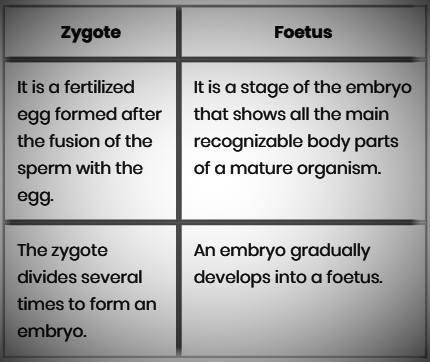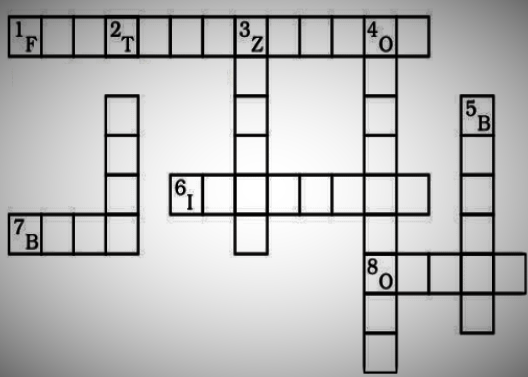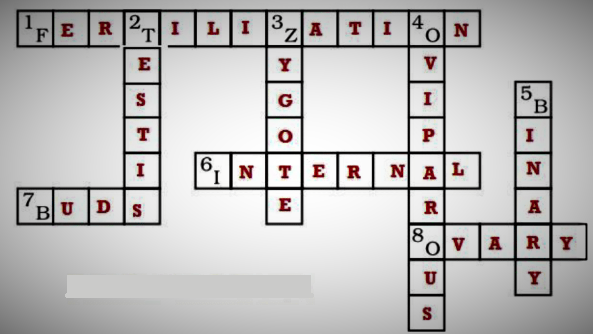GetStudySolution
Getstudysolution is an online educational platform that allows students to access quality educational services and study materials at no cost.
NCERT Solutions for Class 8 Science chapter 9 – Reproduction in Animals
Back Exercise
Question 1:
Explain the importance of reproduction in organisms.
Answers
Reproduction is termed to be a biological process in which organisms give birth to their off springs. Reproduction is very important for the organisms. The organisms reproduce to produce young ones like them. It helps to carry on their generation. If reproduction does not take place,then all the plants and animals would have become extinct. Secondly, It helps in maintaining the continuity of a particular race and helps in increasing the population of the species.
Question 2:
Describe the process of fertilisation in human beings.
Answers
Fertilization involves the fusion of the male and the female gamete. The male and the female gametes are released from the male and the
female reproductive organs. Sperms or male gametes are released from the male reproductive organ i.e., the penis. These sperms then enter
the female body through the vagina. Then, they travel through the fallopian tubes where they meet the female gametes i.e. eggs. Hence,
the process of fertilization takes place in the fallopian tubes. During fertilization, the haploid nucleus (head) of the sperm and
the ovum fuse with each other to form the zygote. This zygote divides rapidly to form a group of cells called morula, which becomes the
embryo. The embryo then develops into a foetus.
Question 3:
Choose the most appropriate answer.
(a) Internal fertilisation occurs
(i) in female body.
(ii) outside female body.
(iii) in male body.
(iv) outside male body.
(b) A tadpole develops into an adult frog by the process of
(i) fertilisation
(ii) metamorphosis
(iii) embedding
(iv) budding
(c) The number of nuclei present in a zygote is
(i) none
(ii) one
(iii) two
(iv) four
a) (i) in female body.
b) (ii) metamorphosis
c) (iii) two
Question 4:
Indicate whether the following statements are True (T) or False (F).
(a) Oviparous animals give birth to young ones. ( )
(b) Each sperm is a single cell. ( )
(c) External fertilisation takes place in frog. ( )
(d) A new human individual develops from a cell called gamete. ( )
(e) Egg laid after fertilisation is made up of a single cell. ( )
(f) Amoeba reproduces by budding. ( )
(g) Fertilisation is necessary even in asexual reproduction. ( )
(h) Binary fission is a method of asexual reproduction. ( )
(i) A zygote is formed as a result of fertilisation. ( )
(j) An embryo is made up of a single cell. ( )
Answers
(a) False
(b) True
(c) True
(d) False
(e) True
(f) False
(g) False
(h) True
(i) True
(j) False
Question 5:
Give two differences between a zygote and a foetus.
Answers

Question 6:
Define asexual reproduction. Describe two methods of asexual reproduction
in animals.
Answers
Asexual reproduction is that type of reproduction in which only single parent is involved. Asexual reproduction takes place by different methods like Budding, Binary fission etc.
1) Budding: This type of reproduction takes place in Hydra and Bacteria. A part of the organism starts bulging out. Slowly it grows and develops into a separate individual.
2) Binary fission – In this type of reproduction, a single organism gets divided into two. This type of reproduction takes place in Amoeba. The nucleus of the Amoeba gets divided into two followed by division of their bodies, each part getting one nucleus and developing into a separate individual.
Question 7:
In which female reproductive organ does the embryo get embedded?
Answers
The embryo gets embedded in the wall of the uterus.
Question 8:
What is metamorphosis? Give examples.
Answers
The transformation of the larva into adult through drastic changes is called metamorphosis.Metamorphosis is a biological process which involves sudden changes in the body structure of an animal by cell growth. It is generally observed in amphibians. Example-Frogs and Butterflies
Question 9:
Differentiate between internal fertilisation and external fertilisation.
Answers

Question 10:
Complete the crossword puzzle using the hints given below.
Across
1. The process of the fusion of the gametes.
6. The type of fertilisation in hen.
7. The term used for bulges observed on the sides of the body of hydra.
8. Eggs are produced here.
Down
2. Sperms are produced in these male reproductive organs.
3. Another term for in vitro fertilisation.
4. These animals lay eggs.
5. A type of fission in amoeba.

Answers
